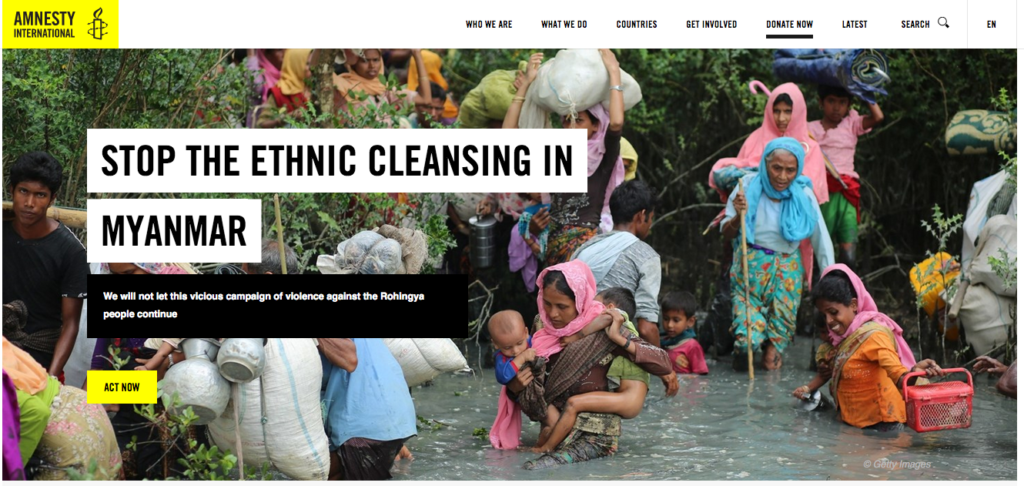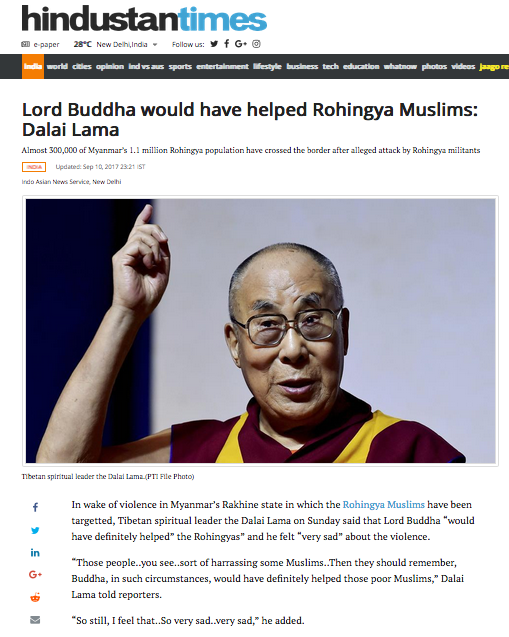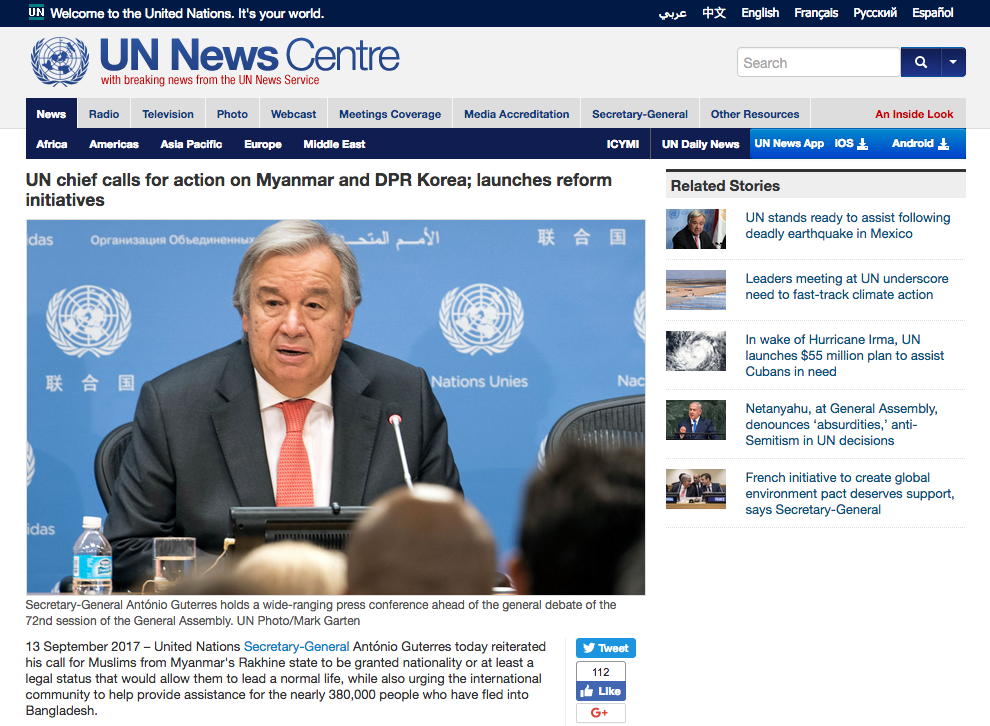20 Sep 2017
Myanmar proves that women leaders are no better than the men
Bangkok – In February 2012, just a few months before the end of his five-year term, the then ASEAN Secretary-General Dr Surin Pitsuwan spoke at the Foreign Correspondents Club of Thailand on the topic of “ASEAN and Change in Myanmar”. During the Q&A, I asked him if Myanmar had a chance to exercise the Last Mover Advantage. I prefaced my question by noting that as the last of the Greater Mekong Subregion countries to have come in from the cold, Myanmar had a superb opportunity to learn from the mistakes of other ASEAN countries and build on its multicultural fabric, geographical location and wealth of natural resources to become a good global example of how to get the development model right.
Dr Surin responded by saying he hopes that aspiration will be realised, but that time will tell. Five years later, time has destroyed those aspirations. Myanmar has become a sorry example of a country getting it wrong on everything. Never has a country suffered such a serious image U-turn so quickly. Never has a Nobel prize-winning leader suffered such a dramatic fall in global respect. Aung San Suu Kyi’s “leadership” has violated every spiritual, geopolitical, regional, national, social and cultural norm, principle and agreement. What a shame for a once-great country that produced the first non-European secretary-general of the United Nations (U Thant, 1961 to 1971).

Here are five reasons for some reflective soul-searching:
1) This is Buddhism?
Buddhists comprise 88% of the Myanmar population. ASEAN-wide, Buddhists comprise 40% and Muslims 42%. Buddhism is a peaceful and compassionate way of life, as evidenced in the serenity reflected on every image of the Lord Buddha. It exhorts its followers to avoid suffering by being mindful of the Four Noble Truths and adopting the Eightfold Path to enlightenment. The treatment of the Rohingyas violates all those precepts. Had the Rohingyas been treated with more humane compassion, it would have been a shining example of ways to improve inter-religious harmony globally. As the Dalai Lama himself said, the Lord Buddha would have treated these people differently.

2) Religious extremism
Religious extremism is rearing its ugly head everywhere. In India, right-wing Hindutva extremism is proving to be as violent and oppressive as Islamic extremism. In Israel, Jewish Zionist extremism is the core fanatic ideology perpetuating one of the longest occupations in modern history. Myanmar has clearly aligned itself with both. Instead, it would have been far better off following the Buddhist middle-path. Muslim insurgencies active in other parts of ASEAN would have noticed that problems can be settled peacefully. People are a country’s greatest assets, especially indigenous, minority communities. Had the Rohingya Muslims been seen as assets, it would have united two great faiths, Buddhism and Islam, in pursuit of peace, ignited a badly-needed feel-good adrenaline rush and forced positive change worldwide.
3) Women as leaders?
Much is being made these days about the role of women as leaders. There was much hope in Aung San Suu Kyi, the only Asian woman to have won a Nobel prize. Clearly a very articulate and educated lady, she became a symbol of resistance against military oppression. The enormous publicity generated by the spin machine portrayed her as being ready to stand up for the ideals of human rights, democracy, freedom and independence. What a letdown. Women leaders can be just as vicious and hypocritical as the men. Had she walked the talk generated by her now discredited halo, it would have advanced the cause of women’s leadership like nothing else. Instead of getting what would have been a well-deserved standing ovation at the annual UN General Assembly jamboree this week, she can’t even show her face there.

4) UN Sustainable Development Goals
Now at the apex of the global development agenda, the UN SDGs are a template for holistic, inclusive and comprehensive nation-building, especially for countries classified as emerging economies, such as Myanmar. All the homework has been done. Countries which align their national development agendas in line with the SDGs can save themselves millions of dollars in consultancy fees. Just about each of the 17 SDGs are perfect for the development of Myanmar, ranging from peace and justice to promoting gender equality and environmental preservation. Building an inclusive society is critical to political stability and ensuring inflow of investment. All that is up in smoke. The long-term impact and unintended consequences of this debacle are beyond comprehension.

5) ASEAN integration or disintegration?
ASEAN is striving to build an integrated society based on the “One Vision One Identity One Community” vision slogan. Obviously Myanmar sees disintegration as a better option. The ASEAN integration concept comprises of the socio-cultural, economic and security-political pillars. All three are interlinked. With Myanmar’s more than 100 ethnic groups, the socio-cultural pillar was perhaps the most important. The country had an opportunity to become a shining example of socio-cultural integration across ASEAN and Asia, arguably the world’s most socio-culturally diverse continent. Another monstrous failure. If a chain is only as strong as its weakest link, the treatment of the Rohingyas further weakens ASEAN as a whole.

From any principle of leadership, it is difficult to understand the logic. Myanmar would have become the poster-boy of an emerging Asian Century. Aung San Suu Kyi would have probably outshone Nelson Mandela. The Rakhine region, strategically located adjacent to Bangladesh, is one of the most pristine in ASEAN and could have become a major bridgehead for cross-border transport, trade and tourism. Instead, Myanmar and its poster-girl are now getting more bad press than Islamic terrorists and Donald Trump. She claims the world is witnessing an “iceberg of misinformation.” In the Muslim world, all we can say is, “welcome to the club.”
Meanwhile, the Myanmar Tourism Federation is struggling to cope with this clearly unexpected image puncture, and ward off a potential inbound tourism disaster. Two crisis-management releases put out in just the past week alone have made some motherhood-and-apple comments about how Myanmar respects all cultures and religions.
The latest one, dated 19 Sept, says, “We call on people worldwide to support ALL people of any race, religion or ethnicity in a peaceful way and come and visit Myanmar now as this will help reducing the poverty all around the country and help to build a peaceful and stable society in Myanmar. Postponing or cancelling trips to Myanmar will hurt the people more. Just like countries as Canada and Denmark are actively supporting people in Myanmar irrespective of ethnic, political and religious background, Myanmar Tourism Marketing calls for tourist to continue to support Myanmar tourism.” The release also says Myanmar is “one of the most welcoming and friendly countries in the world and very, very safe to visit as long as you stay within the green areas.”
That release only makes the Myanmar tourism industry look worse. It says, effectively, never mind what’s going on, come and have a nice time anyway.
A more sensible option would have been for the leadership of the Myanmar Tourism Federation to objectively analyse the entire situation from a cost-benefit perspective and establish whether the decisions of the national leadership are generating any benefits for the people of Myanmar. A negative conclusion would open the door for the MTF to seek accountability. This analysis clearly articulates the humongous benefits that await. If the MTF uses it as a checklist to initiate a policy-change, it may produce far better results than brain-dead press releases.

